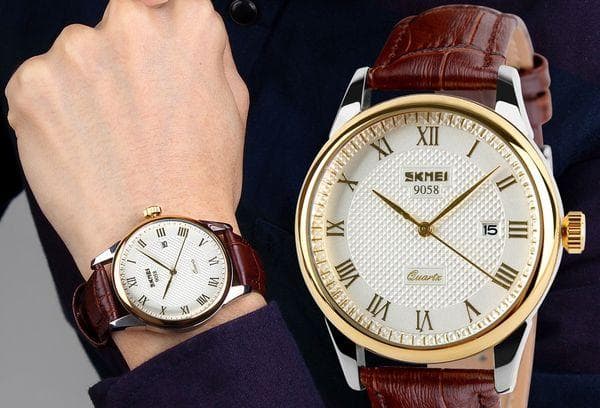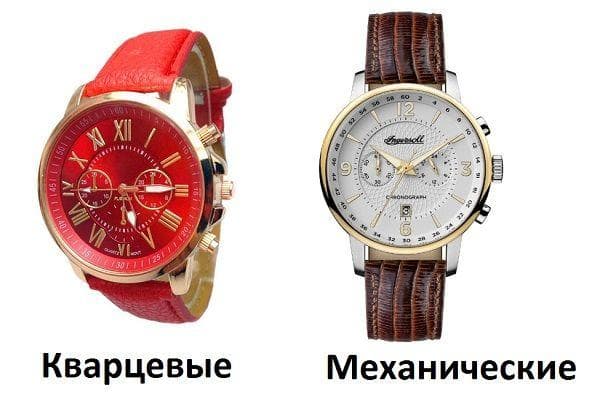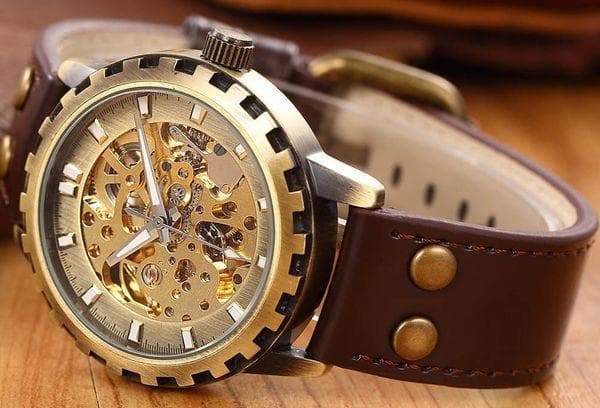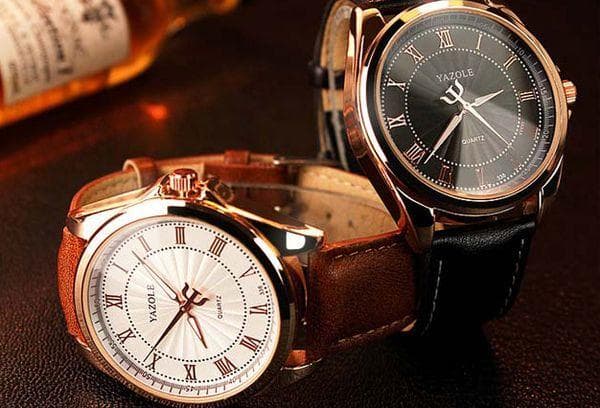What is the difference between quartz watches and mechanical watches - why do we overpay for mechanics?
Which watch is better, quartz or mechanical? For 50 years people have been looking for the answer to this question. Why 50? Because the quartz movement was invented in 1969. Since then, the controversy has not subsided.
Let's compare competing models and find out how they differ and how much
What is a mechanical watch
The mechanics work due to the tension of the spring. You rotate the “grid” (aka the winding key), the spring twists and then slowly relaxes. At the same time, it pushes the drum, and the drum drives the gears.
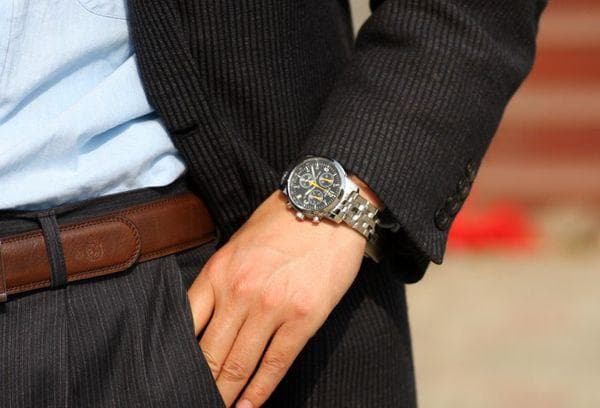
But there is a problem: the spring releases tension at an uneven rate. Under such conditions, the mechanism will work, gradually slowing down. To compensate for this drawback, an important element is included in the design - a balance-spiral. This part rotates left and right at a given frequency. At the same time, due to the pin or anchor escapement, it regulates the accuracy of the entire mechanism.
An interesting fact: the length of the watch spring reaches 50 cm. Yes, yes, a watch the size of a chocolate ruble hides a metal ribbon up to half a meter long.
What is a quartz watch
Quartz runs on batteries.
- The battery provides energy to the stepper motor and electronic unit.
- The electronic unit sends pulses to the engine exactly 1 time per second.
- The engine turns the arrows through a system of gears.
To ensure that the mechanism operates at a constant speed, a quartz resonator is installed in it - hence the name of the clock.
Did you know that electronic watches are also quartz. They contain a quartz crystal, and it performs the same function. But historically, we call only watches with hands quartz.
What is the difference
Many people think that the only difference between the two types of watches is whether they require manual winding or not. In fact, the mechanisms are structurally different.
Mechanics work due to the mechanical movement of parts. They are constantly under load, which means they must wear out quickly. To prevent this from happening, manufacturers use high-quality and durable materials - steel, ruby, brass. Or they don’t use it - and then you buy a defect.
Another problem is the high requirements for balance and precision of the mechanism. The slightest inaccuracy during assembly, a tiny design flaw - and your watch will start to lag or rush.
But the higher the requirements for parts, the more difficult it is to produce them. This means that the cost of manufacturing and assembly increases. Swiss watchmakers assemble the most reliable mechanical models from laboratory-tested parts by hand.
With quartz everything is simpler. The battery provides energy, the resonator regulates the constant pulse frequency, and the mechanism operates as reliably as possible. Parts experience load only at the moment of rotation, and this is a fraction of a second. The rest of the time they are at rest. This means there is no need for “elite” materials.
These watches are made in factories in large batches, and this does not affect the quality at all.
Advantages and disadvantages - table
For clarity, we will collect all the pros and cons of the two types of watches in one table.
| Mechanism characteristics | Mechanics | Quartz |
| Accuracy | Cheap models are behind or in a hurry. | They work accurately regardless of the price. The exception is open marriage. |
| Price | High. | Low. |
| Need to start manually | Necessary. | No need. |
| Power reserve | Maximum 2 days. | From several months to several years. |
| Resistance to mechanical damage | Low. | High. |
| Maintainability | High. | Low. |
As you can see, the leader is obvious. But not everything is so simple.
Pros and cons of mechanics
Mechanics have many advantages:
- Autonomy. You don't need to look for a battery and then find a technician who will install it.
- Durability. Such models require high quality parts and assembly. This is not only precision, but also strength and wear resistance of the mechanism. Some watches have been running for centuries and still work.
- Spectacular appearance. To justify the high purchase price, manufacturers pay a lot of attention to design.
- Such models are easier to repair.
- A self-winding watch does not need to be wound by turning the strap.
In such mechanisms, an eccentric is installed - this part rotates at the slightest vibration of the watch and tightens the spring. You just put on your watch and go about your business. The mechanism is started by mechanical vibrations of the hand.
There are also a lot of disadvantages:
- You need to start the mechanism once every 1-2 days, depending on the model. Late, forgotten, overslept? That's it, the clock is up.
- Low accuracy. The coolest mechanical models are off schedule by 1-4 seconds per day. For ordinary watches, the discrepancy reaches 30 seconds or more. It doesn’t sound scary, but in a week it’s already 3.5 minutes. And in a month - 15 minutes.
- Weight and dimensions.Due to the design features, the mechanics are heavier and larger. The heaviest ones are self-winding models.
- The mechanism is shock sensitive. Dropped your watch from a height of 1 meter? I'll have to go to the workshop.
- Regular preventative maintenance is required. The watch needs to be cleaned, lubricated and adjusted.
- Women's self-winding watches are unreliable. Due to the design features, they are smaller than men's ones, so the size of the parts has to be compressed. This affects the quality.
- Few functions. The mechanism is large and complex, the manufacturer has nowhere to insert additional “buns”.
- High price. The cheapest men's watches cost about 1,500 rubles.
The main feature of mechanical models is their status. For his sake, you will have to put up with shortcomings.
Pros and cons of quartz
The advantages of these models are obvious:
- High accuracy. An ordinary model loses its speed by 20 seconds per month. Elite – for 5 seconds per year.
- No need to start it. All you have to do is change the battery every 1-2 years. In some cases, even less often.
- Endurance. The simpler the mechanism, the less likely it is to break. Shock-resistant watches, underwater watches, designed for high loads - this is quartz.
- Lots of features. Manufacturers equip these models with an alarm clock, calendar, barometer, compass, stopwatch, thermometer, and even a depth measuring device.
- Price. The cheapest men's watch will cost you 1000 rubles. The difference with mechanics is 1.5 times.
Quartz has few disadvantages:
- Ordinary appearance. The average quartz is mass stamped. And this is clearly visible.
- Image. The coolest elite models are mechanical. This is how it happened historically.
- If your watch breaks, there's a good chance you'll have to throw it away.
That's all. Yes, this watch is very comfortable. They're just not prestigious.
What is better to choose
To make the right choice, answer a few questions.
- Do you want to save money?
If so, your option is quartz. With equal quality of the mechanism and case, such models are much cheaper.
- Do you want to look expensive and stylish?
Then buy a manual. Elite models from the most prestigious manufacturers require manual winding.
- Do you have a good memory?
The daily plant is very easy to forget about.
- Do you play sports or do heavy physical work?
Quartz watches are much more durable.
- Do you want something that will last for many years?
Elite mechanical watches will serve both you and your children.
- Need additional features?
If you cannot do without a barometer and calendar, you will have to buy quartz.
Weigh the pros and cons, think about what exactly you want from a watch - and make your choice.
